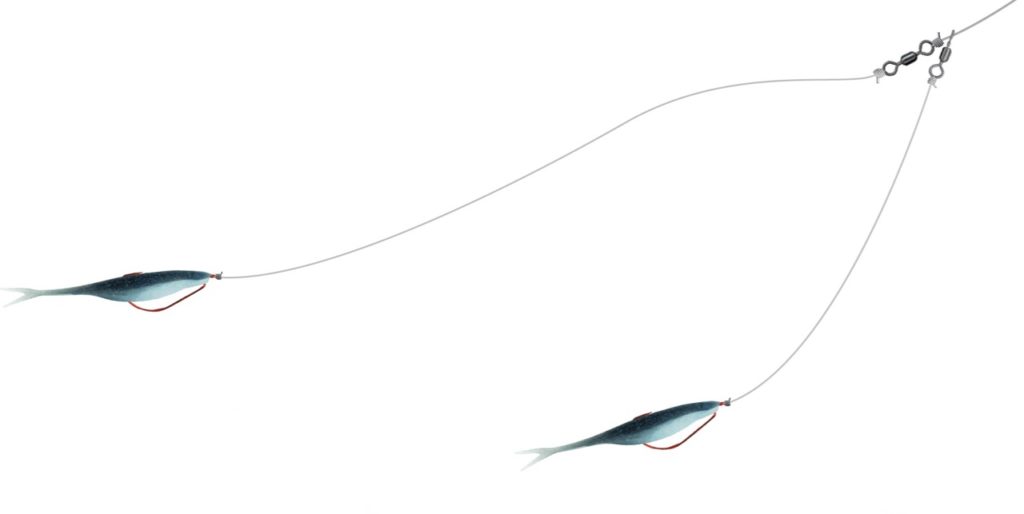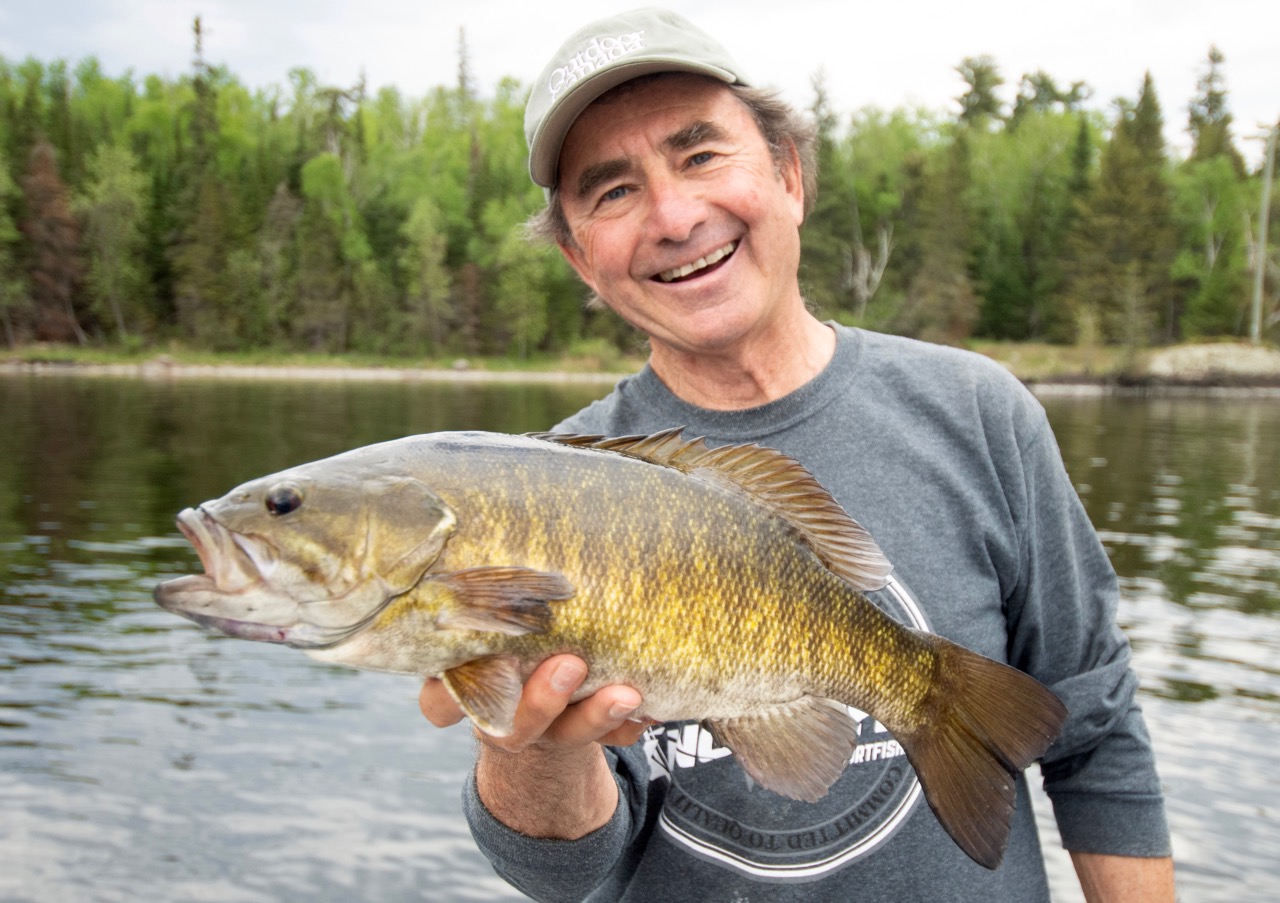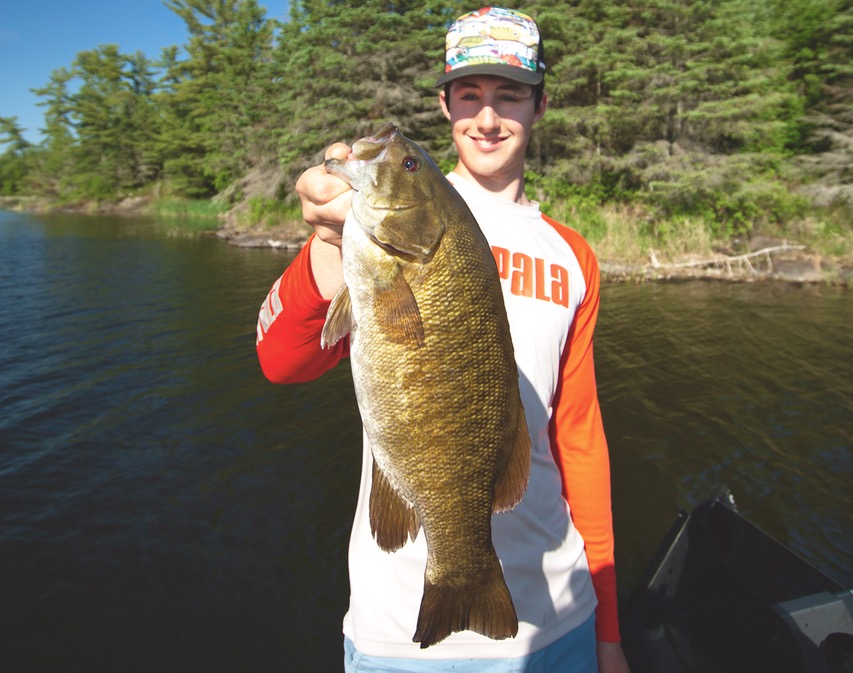Tandem time
To catch more fish, two (or more!) baits are often better than one—on the same line
Advertisement
#1 DOUBLE-FLUKE RIG
Sometimes called a donkey rig, the double-fluke rig is an easy way to present two soft-plastic fluke-style baits. It’s deadly anytime you hear a splash, turn around and see a pack of smallmouth, largemouth or striped bass herding a school of baitfish up to the surface. When anglers see this kind of surface commotion, many reach for a topwater lure because they think the predators are feeding on top. However, the fish are actually pushing the baitfish up and trapping them at the surface.
Advertisement
A double-fluke rig is also one of my favourite ways to search for bass when I’m fishing a new lake for the first time, or a body of water that I know well, but I’ve lost contact with the fish. Catching a fish is always decisive, but many times I just want one to show itself so I can slow down and pick apart the school. And when bass are scattered, especially smallmouths, and I’m looking for a reaction strike rather than a feeding response, nothing entices them to bite faster than a pair of flukes dancing past their noses. This rig is also astonishingly productive in the spring and fall when brook trout, lakers and splake flood the shallows to gorge on minnows.
COMPONENTS
To prevent the flukes from tangling, I tie a barrel swivel to one end of a 14-inch, 10- to 12-pound-test monofilament or fluorocarbon dropper line. I then tie a 2/0 to 4/0 EWG hook (depending on the size of the fluke) to the other end of the dropper line. Next, I thread my 10- to 14-pound main line braid through the open ring of the swivel, allowing the swivel to run freely up and down the main line.

Rounding things out, I attach a barrel swivel to the end of the main line to stop the free-sliding dropper line. On the other side of that swivel, I attached an 18- to 24-inch leader with a second 2/0 to 4/0 EWG hook tied to the end. Finally, I attach a fluke-style minnow to each hook. (I always use a hook with a top-notch bait keeper to stop the soft-plastic from slipping off; I’ll also often add a drop of instant adhesive, such as superglue, for extra insurance.) The end result is an amazingly tangle-free rig.
Advertisement
TECHNIQUE
Using a light braided line is essential so you can cast the baits as far away from the boat as possible, then work them erratically. It also helps you set the hook with authority when a fish hits at the end of a long pitch. I typically fish this rig for smallmouth bass using spinning gear, although some largemouth pros prefer baitcasters.
If you’re casting around weeds or wood, hook your baits weedless with the point slightly embedded under the skin along the back of the baits. If you’re fishing open-water structure, however, you’ll increase your hooking percentage significantly by keeping the point exposed.
Advertisement
Finally, because I’m looking for a reaction bite or schooling strike while trying to simulate a herd of panic-stricken minnows, I tend to fish the rig more quickly and erratically than when I’m pitching a single fluke-style bait (which I often pause and let flutter slowly down). As well, I almost always keep the double-fluke rig in the upper four feet of the water column.


